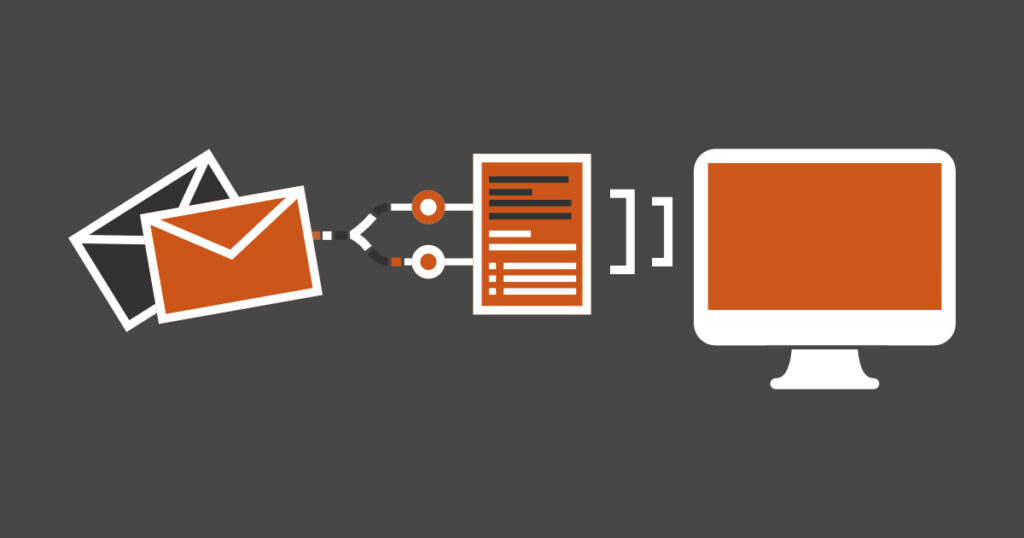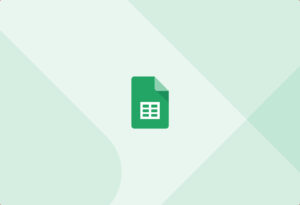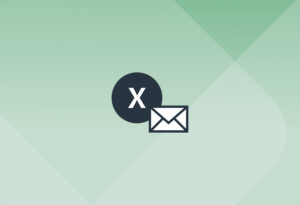Businesses that process invoices daily often lose time on manual data entry.
To automate this process, sometimes a software development team will build in-house billing software. But this can be a long and expensive endeavor, so many companies turn to off-the-shelf solutions instead.
If you routinely receive emails with purchase or work order information, and your team spends a lot of time inputting data into your system, you should invest in an email parser.
Continue reading to find out how how software development teams can automate billing processes with email parsing.
Billing Processes Are Costly When Done Manually
Processing bills and invoices involves inputting various data like date, time, customer name, contact information, address, product name, quantity, price, etc. This information is important for bookkeeping, and keeping legal evidence, tracking inventory, and gathering consumer insights. As such, it’s necessary to enter and store this data, both when you create and receive invoices.
However, inputting data manually every day is a tedious task that requires hours upon hours of typing or copying & pasting information. Furthermore, the true cost of manual data entry includes more than the office hours spent processing invoices: there is also the cost of human error. An employee who must process a large number of invoices daily can – and will – make mistakes.

In the case of billing and invoice data, incorrect information like the wrong amount or tax rate will have a serious impact on your business. Specifically, the correction process can be long, complex, and stressful. Furthermore, your customers may feel aggravated by invoice errors and take their business elsewhere.
The 1-10-100 rule illustrates the cost of human errors quite well: it costs $1 to prevent errors by verifying data, $10 to fix incorrect data, and $100 if bad data is left unfixed.
So what solution should you choose to streamline billing processes while minimizing human errors? As we have briefly mentioned, if you have a software development team, they could develop billing software. But is it really the best option?
Should You Build Your Custom Billing Software or Buy Commercial Software?
If you have a development team in your company, you might be considering the option of having them build custom software that will automate billing processes. The other option is to invest in commercial software that allows you to achieve the same result. Let’s review the pros and cons of both options:
The pros of developing billing software
- You can customize your billing software with features that match your unique needs.
- You can reach out to your software development team anytime for support with no extra costs.
The cons of developing billing software
- Building custom software is a long endeavor that can take multiple months or even a year. During that time, you will still have to rely on manual data entry and may miss opportunities to scale your activity.
- Developing in-house or hiring a company to develop your software for you is very expensive. This cost can take a toll on your finances and bottom line.

The pros of buying commercial billing software
- You can deploy commercial software quickly.
- Commercial software is developed by experts, used by numerous businesses, and continuously improved. So it will most likely be effective at doing what you expect of it.
The cons of buying commercial billing software
- You may end up paying an expensive price or monthly subscription for unnecessary features.
- You may have to pay for ongoing support.
- The solution you choose may not integrate with your accounting software
The answer to the question of whether to build custom software or invest in an off-the-shelf solution will differ from business to business. Still, thanks to the evolution of automation technologies, more and more companies are investing in solutions that automate invoice processing.
Leverage Automation to Streamline Your Billing Workflow
Rather than outsource data entry or develop in-house software from scratch, the faster and more affordable option is to invest in an email parser that automates the billing process for you. Using an email parser will allow you to:
- Cut down countless hours of manual data entry. The time and money savings enabled by automation are huge. The cost of human error also decreases significantly.
- Increase staff productivity. Once billing processing is automated, your team can spend more time on business-critical tasks like customer service or developing software.
- Streamline your billing workflow. Processing invoices will involve fewer steps thanks to the decreased risk of errors. This also allows for faster processing of payments and record-keeping.
- Provide better customer service. Your customers will quickly (if not instantly) receive invoices with accurate information. This leads to higher satisfaction and less churn.
- Scale your business. With automation, you will be able to process more customer orders and requests at the same pace. Similarly, trying new pricing models and discounts options becomes easier.
If you receive recurring emails with billing and invoicing data, Mailparser will help you accurately extract that data and send it to your system, thus effectively streamlining your billing processes.
How to Automate Billing Processes with Mailparser
Mailparser accurately extracts data from an email’s subject line, body, and even attachments. Mailparser can process any number of emails received. You can then send the data to your CRM, ERP, accounting software, or any other system.

Below are the steps you need to follow to extract Realtor leads to Excel and Google Sheets:
Step 1: Create a free Mailparser account
Sign up for a free Mailparser account. Note that no credit card information is required and that all features are available in the Free Plan – which you can keep using as long as you want.
No credit card required
Step 2: Create an inbox for your billing and invoice emails
Create an inbox where you will send your emails. Mailparser will then generate an email address for your inbox. Keep in mind that you can have several inboxes in your Mailparser account, each for a different type of email.
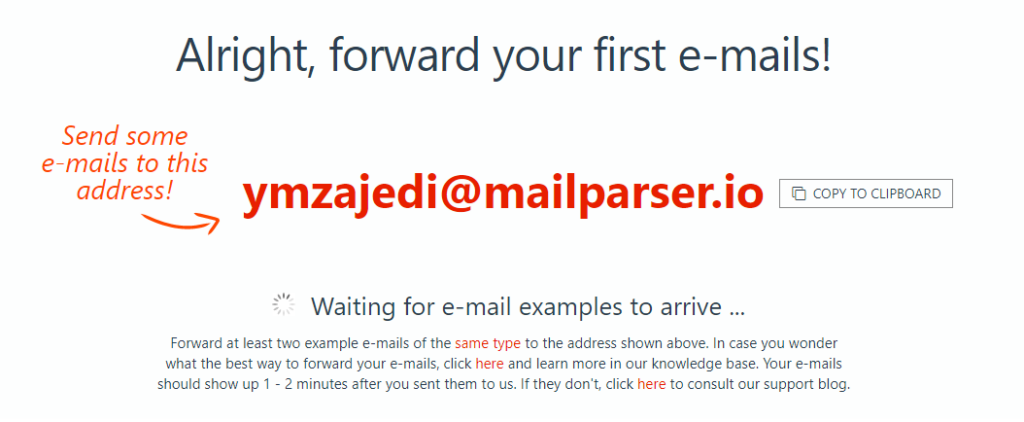
Step 3: Forward an email to your Mailparser inbox address
Send a test email to your Mailparser inbox address. It will appear afterward in the ‘Emails’ section of your dashboard.
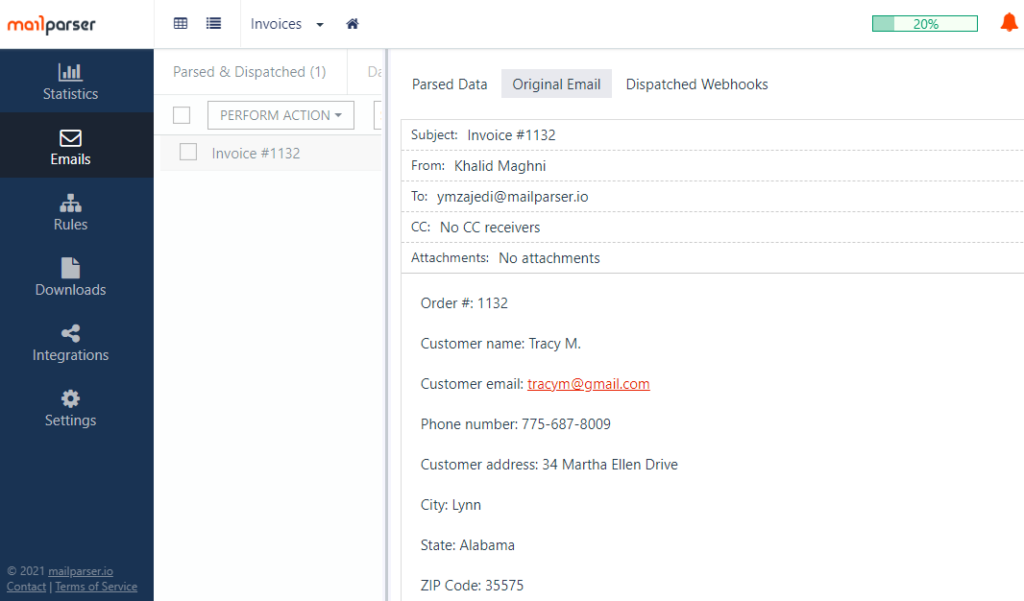
Step 4: Choose the Automatic Setup for emails
Mailparser uses a set of instructions we call “parsing rules” to identify and extract data. You simply have to set up the parsing rules that work for you and Mailparser will take care of the data extraction.
Go to the ‘Rules’ section on the left-side menu. Click on the button that says ‘Try Automatic Setup’. In the next screen, select your test email and then select the type of email from the drop-down list on the right. In this case, it’s ‘Generic Machine Generated Email’. Select it and confirm by clicking on the ‘OK, Start with This’ button.
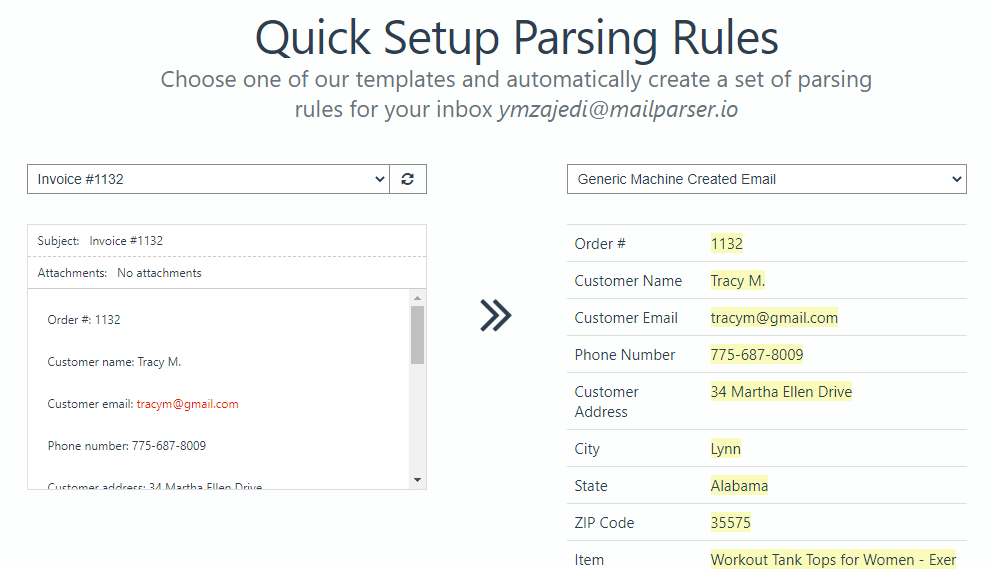
Step 5: Check the parsed data for accuracy
Mailparser will extract the data from your email and show you the results. Make sure that all the data has been parsed accurately. If not, you can refine the parsing process by adding parsing rules. You can learn how to create custom rules here.
Step 6: Download your parsed data or export it to a cloud app
After the email parsing process is done, you can either download your data to an Excel file or send it to a cloud app like Google Sheets or your accounting system, CRM, etc.
Download your parsed data
To download your parsed data, go to ‘Downloads’ and click on the button ‘Create First Download Link’. Choose a file format and Mailparser will generate a download link for your parsed invoice data.
Export your parsed data to a third-party cloud app
To export your parsed data to your cloud accounting software or any other cloud app, go to ‘Integrations’ and click on ‘Add New Integration’. Select one of the integrations suggested, like Salesforce, or click on ‘Generic Webhook’ to export your data to any cloud app not listed. Enter a name for your webhook and a target URL, and Mailparser will generate a webhook to transfer your data to your app.
Note that you set up Mailparser to automatically forward all parsed data to Excel, Google Sheets, or any cloud app.
Frequently Asked Questions
Can I extract data from email attachments?
Yes, you can extract data from email attachments, including files of various formats such as Word, Excel, TXT, XML, etc.
Can I extract billing and invoice data to my cloud accounting system?
Yes! You can export the data parsed from emails to a cloud accounting system like Quickbooks Online. This page lists our current integrations. If you don’t find your app or service, reach out to us and we will set up the integration for you.
What Mailparser Users Have to Say
Mailparser users chose our email parser over other options for several reasons, mostly the ease of use, the accuracy of the extracted data, and the affordable pricing plans.
For instance, Gebetshaus-Freiburg – a ministry of prayer in Germany – uses Wix for their website. Because their webshop cart does not create purchase orders and invoices automatically, Gebetshaus-Freiburg turned to Mailparser to automate the order process.

“The usability of mailparser.io allows us to receive order emails with the proper amount and product ordered, as well as customer billing & shipping information in a structured table format. We use their Google Sheets webhook to create invoices and purchase orders that we can send via email, and are printable for our customers.
Our previous order process took 4-8 hours/week. With mailparser.io we reduced this to less than one hour weekly. This made mailparser.io an easy decision to use.”
Dr. Matthias Wegner – Gebetshaus-Freiburg

Similarly, YourCloudTelco uses Mailparser to extract invoice data accurately and facilitate bank reconciliation:
“We are currently using [Mailparser] to extract data from tax invoices/receipts that we issue to our customers. We are a telecommunications business with a pre-pay service so each time a customer tops up their account they are issued with a receipt. After that, we send a BCC copy to mailparser.io and the relevant data is extracted and sent via a webhook to Zapier and then zapped into Xero. This saves so much time for us and the information is accurate to the cent. It makes our bank reconciliation each day a one-step process.
We are also using mail parser.io to send customer information to our CRM.”
Dot Johnstone – YourCloudTelco
Automate Billing Processes and Grow Your Business
Instead of building automation software from scratch, or acquiring expensive software with unneeded features, your software development team can use Mailparser to automate billing processes.
By using our email parser, you will be able to save a lot of time, money, and effort. Automating the data entry process will also help you grow your business without being hindered by the additional volume of invoices. Using Mailparser is quick, simple, and requires no coding knowledge. Start a free account today and give Mailparser a try.
No credit card required
